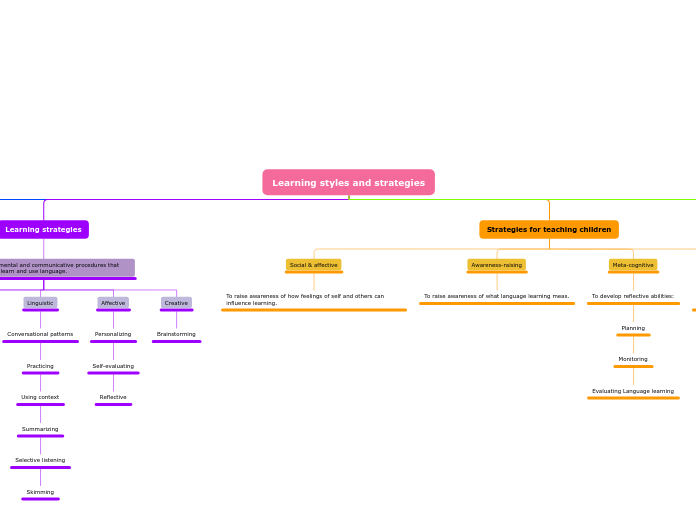jonka Erika Portilla 2 vuotta sitten
209
Learning styles and strategies

jonka Erika Portilla 2 vuotta sitten
209

Lisää tämän kaltaisia
Reflective thinking
Self-evaluation
Stimulate what has been learned
Create a record of achievements
Planning
Monitoring
Evaluating Language learning
Brainstorming
Personalizing
Self-evaluating
Conversational patterns
Practicing
Using context
Summarizing
Selective listening
Skimming
Cooperating
Role-playing
Classifying
Predicting
Inducting
Taking notes
Concept mapping
Inferencing
Discriminating
Diagramming
Tolerance of ambiguity
Right and left hemisphere dominance
Environmental
Physical
Sociological
Perceptual
Visual
Auditory
Tactile
Kinesthetic
Field depedant
Field independant
Analytic
Global
Reflective
Impulsive